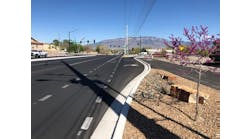Sewage overflow. It's a growing problem nationwide.
More and more communities face the dual problem of aging
infrastructure and overdevelopment due to population growth.
Under the Federal Clean Water Act (CWA), EPA is keeping a
vigilant eye on the problem. When a community does not meet CWA regulations for
sewage overflow, EPA works with that community through long-term loans and
expertise to develop a solution.
Such is the case in Montgomery County, Ohio.
Working with EPA's Department of Financial Assistance, the
county implemented a 10-year, $100 million Sanitary System Overflow (SSO)
Program to upgrade infrastructure.
The Montgomery County SSO Program includes a wide range of
evaluations and upgrades including these:
* Creation
of system inventory databases detailing information on every manhole, sewer
reach, lift station and force main in the existing collection system, and the
creation of maps of the existing collection system;
* Development
of a flow monitoring program to determine base flows and the wet weather
infiltration/inflow (I/I), along with the development of a relationship between
precipitation and I/I for each monitor;
* Establishment
of a field inspection program in limited areas to determine the collection
system condition and the probable sources of I/I;
* Evaluation
of the potential for reducing the levels of I/I;
* Review
of the existing collection system and treatment facilities, and a hydraulic
analysis of the collection system to determine capability to convey expected
wastewater flows. Analyses would be for the 1-, 10-, 25- and 50-year storms for
design years 1990, 2000, 2010, 2020 and 2040;
* Development
of a master plan for recommended water pollution control improvements,
including a phased construction program and opinions of probable costs.
As part of its SSO program, Montgomery County determined
that equalization basins, strategically placed throughout the county, would be
required to capture sewage overflow that occurs most frequently during storm
events.
According to Bill Horst, chief engineer for Montgomery
County, the county established strict requirements for the equalization basins.
"They had to be enclosed with concrete domes. They had
to fit aesthetically in the industrial and residential locations in which they
were placed. They had to have odor control functions. And they had to offer low
maintenance and be durable for the long run," Horst explained.
Based on these and other requirements, the county
competitively bid and selected Preload Inc. of Hauppauge, N.Y., to provide
three prestressed concrete tanks.
"After reviewing alternative structures, we considered
such solutions as AWWA Standard D115 tanks. But ultimately, we determined that
Preload's AWWA Standard D110, Type III tanks were the right solutions for our
needs."
The tanks were then specifically designed and built to meet
the varying requirements for each equalization basin.
"Each basin had unique requirements for capacity, aesthetic
style, footprint and functional capabilities," Horst commented. "For
one location, we needed a smaller capacity facility with a tight footprint
built below ground because the location is near an air force base with strict
height and footprint requirements. For the larger facility, we incorporated a
gravity in/gravity out system to take advantage of the fact that it's built on
a hillside."
Horst explained that the tanks remain empty until sewage
overruns occur, which he said has happened approximately three to five times a
year due to storms. "And when they do, all we have to do is clean out the
tanks afterwards. There's very little maintenance, other than scheduled
replacements of moving parts."
The Montgomery County, Ohio 10-year SSO Program is still in
the implementation phase, with regularly scheduled infrastructure upgrades
occurring and another equalization basin scheduled to be constructed.
"We're working with EPA closely," Horst concluded,
adding, "We're well along the way to establishing an environmentally
compliant infrastructure that will carry us into the next century."
For further information, contact Preload Inc. at
888-PRELOAD.


